Save it for Later
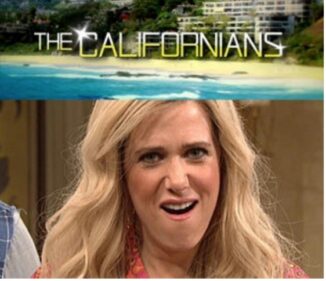
It was a gorgeous June afternoon one Sunday as I prepared for a long drive home. I had just checked out of my hotel after attending the Nuclear Verdicts® Defense Institute in America’s Finest City, San Diego, CA! I had just spent four days deep-diving into the Tyson & Mendes Nuclear Verdicts® defense methods with a room full of impressively experienced litigators from across the country. We rolled up our sleeves, we learned, and we tried bold new defense strategies with and in front of each other. Needless to say: I felt abuzz with the promise of game-changing methods under my belt. But what lay ahead of me was three hours of traffic on the San Diego freeway to get home. The joy of living in Southern California!
As I was questioning why I should leave San Diego on a summer day considering it might be the best vacation destination in America (apologies to my partner Jim Sell and other fans of the “City by the Bay”!), I reflected on my experience.
So many questions and ideas were spinning through my head about how these Tyson & Mendes trial themes and strategies could be used by a defense lawyer to change the game and uplevel results for our clients. Before I started the car, I had to look at my notes regarding these techniques and the attendees’ reactions to each:
- Tell the Jury to Use Common Sense! Initial reactions ran the gamut but largely boiled down to: Common sense is uncommon today! Why bother?!
- Tell the Jury to Be Reasonable! Again, a little resistance: Not sure about that. We are lawyers! Shouldn’t we be throwing some legalese their way instead?!
- Take Responsibility for Something! Here, there came some audible shudders from the crowd: Not our fault! He did it! She did it! They did it! Someone else did it!
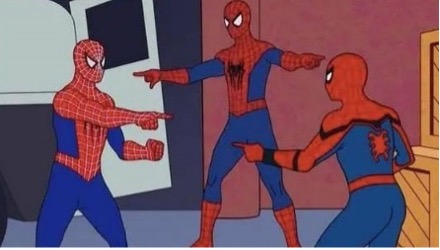
- Personalize the Corporate Defendant! The discomfort with the whole “being human” part of these methods began to surface: I cannot do that. I need to focus on attacking the plaintiff’s claims. I am not even personable myself – I am a defense lawyer!
- Argue Pain and Suffering! My fellow attendees exchanged some sideways glances: Can’t I just tell the jury to be “fair and reasonable” when evaluating plaintiff’s general damages claim like most defense lawyers in America? Defense lawyers should trust the jury and just ignore it, right? …Right?
- Give the Jury a Number… Early and Often! This was the moment I think some attendees might have bolted for the parking lot if the doors weren’t locked: I’ll give a number, alright! A phone number! Eight six seven five three oh nine! Oh, you mean I have to give the jury an award number? Well, I am a defense lawyer, so my number is zero! (Spoiler alert: Bob Tyson will tell you that zero is not a real number in this scenario, much to the chagrin of every clever attorney, ever.) Are you serious? Early and often? I can just “Save it for later”! Right?
Spinning Records Down the Highway
As always, I could not read my handwriting and I was tired. So, I decided to revisit it later and started the car. It was a Sunday in summer, and I had a long California drive ahead of me! What better time to roll down the windows and tune my radio to the oldies station for some Beach Boys, Randy Newman, or The Monkees?!
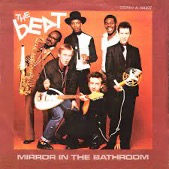
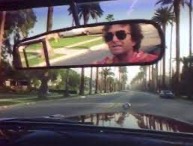
So, I did just that, expecting to hear some songs from the 60s or even the 70s. To my horror, a song from the 80s came on and then some from the 90s. I was not only tired, but old, too! Watch out Swifties (of which there are many in the firm – just tune in September 13 for some glittery proof of that)! Taylor will be on this station in twenty years, and you will feel ancient!
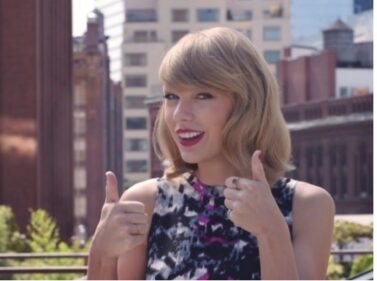
These Themes and Strategies “Spin My Head Right Round, Right Round”!
Once I “shook it off” (there, I fulfilled my Taylor lyric quota), themes, strategies and questions from this weekend kept spinning in my head as I spun the dial searching for more songs from my childhood – I mean, my high school and college days.
It had been four days of challenge, creativity, and collaboration. The most common questions and comments from the attendees were:
“How am I supposed to talk about taking responsibility at trial? I cannot do that. It is admitting fault! I sound weak. Plaintiff’s counsel wants us to do that.”
“Why should I give a number to the jury? That’s admitting fault! My number is zero! I will decide right before closing if I should give a number. More importantly, I want a defense verdict, so I cannot give a number!”
“Why should I be arguing pain and suffering or even discussing it? We should just tell the jury to be fair and reasonable and leave it at that. We do not want to help their case!”
“Why should we talk about our client’s story and personalize them? This is a case about the plaintiff’s accident. That is against the rules! The judge will get upset!”
Just “Shut Up and Dance With Me”!
So many questions! I eventually had to just say to myself, “Self! SHUT UP! Turn up the music and enjoy the drive!” And I did, for about two minutes, until the song “Tenderness” by General Public came on!
I turned it up loud and sang along (and I may have even danced in my seat!):
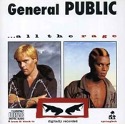
“Tenderness
Where is the
Tenderness
Where is the
Tenderness?”
General Public, “Tenderness” (I.R.S. 1984)
Can you hear it? Don’t say you can hear a cat yowling! Well, I can! I don’t mean the cat! I mean the message from my musical past.
It was an aha moment!

Tenderness is the key! It is the key to the effective and persuasive application of all these methods and themes. What do I mean, you ask? I mean stepping up to show concern for the wellbeing of the plaintiff is the melody that holds the song together. To effectively, authentically, and passionately argue the Tyson & Mendes themes and methods, you have to show up with tenderness.
We know anger is at the heart of every Nuclear Verdict®. In our study and analysis of cases that have gone nuclear, that is abundantly clear. Angry people cannot hear you, so if your jurors are angry, they are not hearing your brilliant legal arguments. In short: the defense bar needs to show the jury they care to get them to listen. Caring and genuine empathy defuses anger. The great John Lennon sang, “Love is the answer,” and he was right. “Love” is just another four-letter word for care.
Anger, on the other hand, is a five-letter word for “greed,” and that is what the plaintiffs’ bar sells 24/7, and all under the guise of concern for their client and the public.
In fact, the next song reminded me of someone, and it stuck in my head!

“I’ve got the brains
You’ve got the looks
Let’s make lots of money
You’ve got the brawn
I’ve got the brains
Let’s make lots of money”
Pet Shop Boys, “Opportunities (Let’s Make Lots of Money)” (Parlophone 1985)
I am not sure if the plaintiffs’ bar has everything the Pet Shop Boys sang about, but they sure put on a show and do a good job characterizing the defense and our clients as the villains in the story. In their version of reality, we might as well be Darth Vader, Lord Voldemort, the Terminator, and ticket brokers for a Taylor Swift concert all rolled into one supervillain!
How do you counteract such a persuasive and powerful hitjob?
Hasta La Vista Baby!

Well, for starters, the defense bar needs to stop showing up to trial as these characters!
“The Terminator: Why do you cry?
John Connor: You mean people?
The Terminator: Yes.
John Connor: I don’t know. We just cry. You know, when it hurts.
The Terminator: Pain causes it?
John Connor: No, it’s when there’s nothing wrong with you, but you hurt anyway. You get it?
The Terminator: No.”
Terminator 2: Judgment Day (Tri-Star Pictures 1981)
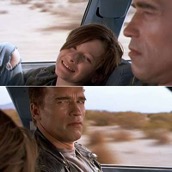
Hear me, defense counsel: You do get it because we are not Terminators! We are not villains! We are humans like everyone in that courtroom, and we have creativity and caring to share with our jurors on behalf of our clients.
An attorney at the Nuclear Verdicts Defense Institute weekend talked about love and empathy for the plaintiff in their mock closing. Some said the attorney sounded like a plaintiff’s lawyer, with all that passion and humanity. While the closing was presented, some even had a look on their face like my seven-year-old son eating vegetables.
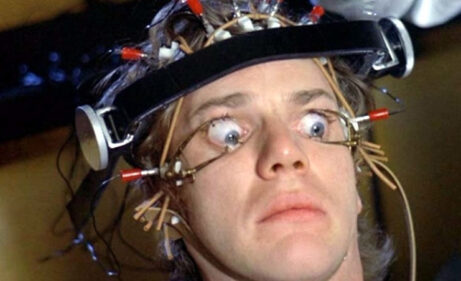
A Clockwork Orange (Warner Bros., Columbia-Warner Distributors 1971)
The question is why? Why can’t defense lawyers be human? Well, many said it is because we are rule-followers by nature, and we argue the law and the facts. Plaintiffs’ attorneys argue about love, passions, sympathy, artwork, the price of jets, the Macarena, and all that emotionally-fueled stuff. Many defense lawyers feel that is just “not us”. “There is no crying” in defense lawyering!”
Well, I disagree!
Yes, we follow the rules and never speed. We wear dark suits and complain the Astros cheated in the World Series (Sorry, Houston office! Go Dodgers!). We have the rulebooks memorized, and we figure the law is on our side, so we have to win, right?
I get it. Rules are important. However, we are human (at least most of us were before going to law school). And here’s the thing: our jurors, our clients, the judge, opposing counsel, the plaintiff, the witnesses? They are all human too.
Be human, and embrace the humanity of it all! Don’t give love a bad name.

Don’t sing the sad song even though Sir Elton keeps telling us to turn them on!
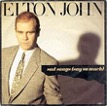
And just Don’t Bring Me Down, Bruce! (Or is it “Groos”?)
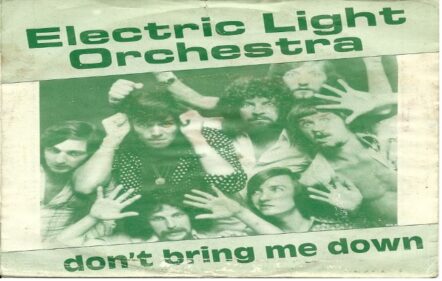
What’s Love Got to Do With It?
Connect your themes and methods of Responsibility, Common Sense, Personalizing Your Client, Reasonableness, Arguing Pain and Suffering, and Giving a Number with the one starting point that ties them all together and gives you credibility: Love!
And you ask, “What’s love got to do with it?”
Everything! Because love is the key to connection!

Finding the connection allows you to show you authentically care about:
- Your client;
- The three virtues of Common Sense, Reasonableness, and Responsibility; and
- Yes, the plaintiff!
The plaintiff may be our client’s customer, neighbor, or friend. That relationship does not need to end when the complaint is filed or the closing arguments are delivered. The plaintiff may be genuinely hurt, and there is likely a way to make them whole again without setting fire to everything your client holds dear (contrary to what plaintiffs’ counsel would have the jury believe). Showing compassion and reasonableness from the start of litigation through trial will help you achieve your ultimate goal of “Justice for All.”
Plaintiff’s attorneys focus on anger, because it is a powerful motivator. Some in the jury box are already angry before they step into the courtroom because someone stole their parking spot, or simply because jury duty stinks! Many jurors are easy prey for the methods designed by plaintiffs’ counsel to drive anger, and they may just want a chance to make a difference in someone’s life. Reminding them of the humanity on your side of the courtroom will not only assuage their fears that you really are the Terminator but will go far in defusing their anger and empowering them to deliver justice – for all.
Jurors will trust you if you show your human side by speaking from your heart about your client’s story and owning some responsibility. That credibility will be imputed to the rest of your arguments, too! Talk about powerful. Turn on that “Heart Light” and show feeling with your story.
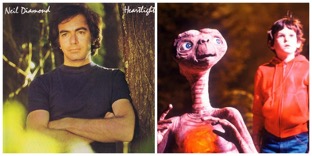
The End of the Road
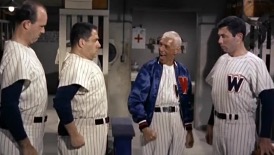
The soundtrack for my weekend was close to completion. As I pulled in the driveway at home, another great song about baseball came on and reminded me of my youth. (No, it wasn’t “You Gotta Have Heart”! I am not that old.)
It was another 80s classic: “Centerfield” by John Fogerty. This was a challenge to me and the defense bar! The bonus song on our album.
“Oh, put me in coach, I’m ready to play today
Put me in coach, I’m ready to play today
Look at me, I can be centerfield”
“Oh, put me in coach, I’m ready to play today
Put me in coach, I’m ready to play today
Look at me, gotta be centerfield
Yeah”
John Fogerty, “Centerfield” (Warner Bros. Records, 1985)
It may not be centerfield but it is in the center of the courtroom.
I am ready! Are you?
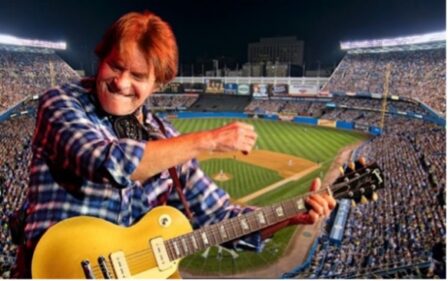

 Author: Richard Somes
Author: Richard Somes
 Editor: Ashley Paige Fetyko
Editor: Ashley Paige Fetyko
 Cannabis Workers Allege Quota to Trim 4 Pounds a Day Violates the California Labor Code
Cannabis Workers Allege Quota to Trim 4 Pounds a Day Violates the California Labor Code
 The Ninth Circuit Reminds Us: Every Word Matters
The Ninth Circuit Reminds Us: Every Word Matters
 NO WAY, PRO SE! The Consequences of Abusing the Judicial System as a Pro Se Litigant in Colorado
NO WAY, PRO SE! The Consequences of Abusing the Judicial System as a Pro Se Litigant in Colorado
 Victim of Financial Mismanagement or Unlawful Retaliation? New Jersey City University Program Founder Claims School Retaliated After Reporting Alleged Sexual Harassment
Victim of Financial Mismanagement or Unlawful Retaliation? New Jersey City University Program Founder Claims School Retaliated After Reporting Alleged Sexual Harassment
 “Real Housewives” Gets a Reality Check
“Real Housewives” Gets a Reality Check
 Missing a Chapter: Insufficiency of Expert Deposition Testimony in Medical Malpractice Litigation
Missing a Chapter: Insufficiency of Expert Deposition Testimony in Medical Malpractice Litigation
 Crash Course: Why Summary Judgment Misses the Mark in Illinois Multi-Cause Limousine Crash Collision
Crash Course: Why Summary Judgment Misses the Mark in Illinois Multi-Cause Limousine Crash Collision
 Bitter Truths: Lead, Cadmium, and Defective Pleadings in California Chocolate Class Action
Bitter Truths: Lead, Cadmium, and Defective Pleadings in California Chocolate Class Action
 The Law of Unintended Consequences: Including Insurance Brokers in Litigation Strategy Communication May Waive the Attorney-Client Privilege
The Law of Unintended Consequences: Including Insurance Brokers in Litigation Strategy Communication May Waive the Attorney-Client Privilege